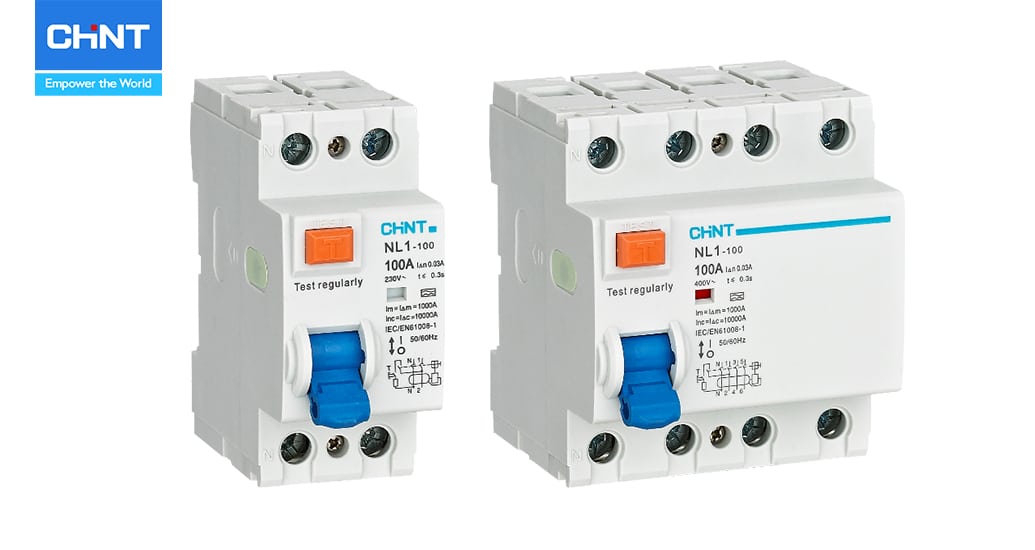Table of Contents |
Electricity plays an important part in everyday life by powering our homes and workplaces. However, electricity leakage from devices and wiring can pose risks of electric shock. Protecting against current leaks becomes essential. One safety device that helps is the residual current operated circuit breaker. It works by quickly cutting off power within milliseconds if it detects any unexpected residual current between live wires and neutral wires.
RCCB: A Comprehensive Overview
A residual current circuit breaker is a type of residual current device. It is an important device for electrical protection. It breaks the circuit when a current leakage is detected. Here’s an overview of RCCB breakers.
Working Principle
A residual current operated circuit breaker continuously monitors for any imbalance between the live and neutral current passing through the cables. The discrepancy indicates leakage current and prompts immediate tripping of the breaker. An electromagnet placed around the live and neutral conductors detects any differential between the two currents. If this differential exceeds the rated residual operating current, the electromagnet activates a mechanism that breaks the circuit in less than 0.1 seconds before an electric shock can occur.
Functions
Effective residual current protection requires combining various functions. RCCBs achieve comprehensive coverage through isolation, control, and current interruption of leakage.
Types
Depending on the principle of leakage current detection, RCCBs are available in electromagnetic and electronic designs:
Electromagnetic: It uses a toroidal coil to detect imbalances in live and neutral currents electromagnetically. It’s less prone to interference issues.
Electronic: Semiconductor-based detection allows these RCCBs to trip at very low levels of 30mA. However, susceptibility to EMI remains a concern.
Electromagnetic RCCB: A Preferred Option Over Electronic Type
Electromagnetic residual current operated circuit breakers can be a preferred option over electronic types. The electronic RCCB may not trip in case of a phase break in the neutral wire, leaving the circuit energized. Without a closed loop, electronic RCDs would not detect any imbalance and fail to isolate the circuit. Electromagnetic induction allows the electromagnetic RCCB to detect even extremely small leakage currents. Since it works on the principle of inductive loop detection, a neutral wire disconnect does not hamper its ability to sense current differences.
The electronic type is also prone to electromagnetic interference from devices such as variable-speed drives, inverters, and switch-mode power supplies. These tend to generate high-frequency signals that can potentially cause nuisance tripping in an electronic RCCB. The electromagnetic residual current operated circuit breaker is immune to such interference due to its induction-based operating principle.
Product Highlight: CHINT NL1-100 RCCB (Electromagnetic Type)
The CHINT NL1-100 RCCB from leading manufacturer CHINT is one of the most reliable options available on the market. As a durable electromagnetic residual current device, it ensures uninterrupted protection for circuits. The key characteristics that make it a top choice include:
1. High Breaking Capacity
The residual current operated circuit breaker reliably protects heavy-duty industrial circuits with its robust 100A breaking capacity. This high tolerance effectively safeguards high-power machinery and its electrical systems.
2. High Anti-Interference Performance
Being electromagnetic, this 100 Amp RCCB is immune to electromagnetic noise commonly generated by modern devices such as variable-speed drives. It hence ensures reliable tripping without nuisance shutdowns.
3. Impact and Heat Resistance
The product’s rugged build withstands tough environmental conditions without performance deterioration. The flame-retardant material and reinforced contacts can withstand vibrations and high ambient temperatures.
4. Double Busbar Design
The dual busbar design allows connection between NL1-100 and regular cable, pin-type busbar, and U-type busbar. This future-proofs the residual current operated circuit breaker for rewiring needs with highly durable terminals.
5. Fault Current Indicator
An indicator light makes it easy to determine if there is a leakage fault in the circuit without having to individually check each line. It significantly saves time.
Tips on Using RCCB
Selecting the right residual current operated circuit breaker is only the beginning. Correct application and maintenance are equally important for ensuring lasting safety. Follow these tips:
RCCBs should be used together with MCBs for optimal safety. It is recommended that CHINT RCCB be used together with CHINT MCB. MCBs protect from over-current while RCCBs safeguard from residual current. You can also use an RCBO for both over-current and residual current protection.
Regularly test the RCCB using the test button. This helps ascertain its functioning without actual faults. Monthly testing is recommended for CHINT NL1-100 RCCB.
Treat every trip carefully. It indicates an issue that needs addressing. Locate and fix potential electric leakages to restore safety.
Conclusion
Residual Current Circuit Breakers provide an essential and effective line of defense against electric shocks. As electrical infrastructure expands rapidly worldwide, safety should remain the topmost priority. While electronic types are suitable for some applications, electromagnetic variants like the NL1-100 are more dependable options. Adopting an RCCB for circuits is a small but wise investment towards well-being. At CHINT, we offer not only durable safety devices but also stringent post-purchase support. Visit our website to browse all of our offerings.





-20240428-2.jpg)









